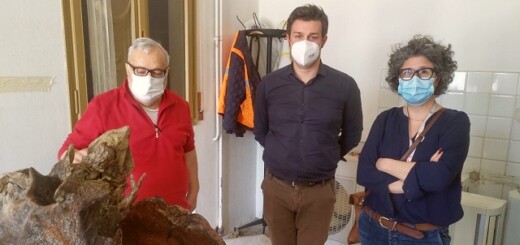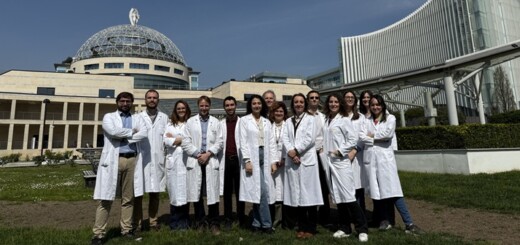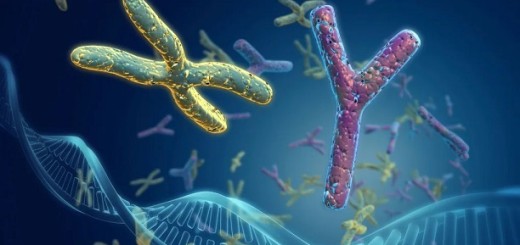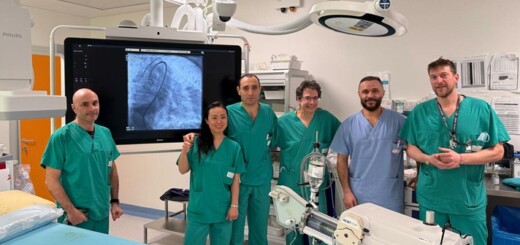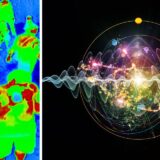Campi Flegrei, nuovo studio svela la dinamica dei serbatoi magmatici profondi all’origine del bradisismo

Ricostruite le dinamiche delle due principali sorgenti magmatiche sottostanti la caldera dei Campi Flegrei
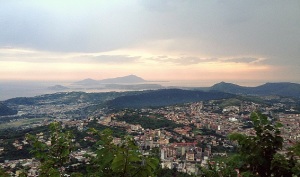
Roma, 9 marzo 2022 – Definita l’architettura del sistema magmatico profondo dei Campi Flegrei all’origine della dinamica della caldera, di fondamentale importanza anche per la valutazione della pericolosità vulcanica dell’area.
Questi i risultati raggiunti da un team multidisciplinare di ricercatori dell’Istituto Nazionale di Geofisica e Vulcanologia (INGV) nello studio “New insights into the recent magma dynamics under Campi Flegrei caldera (Italy) from petrological and geochemical evidence”, e appena pubblicato sulla rivista Journal of Geophysical Research: Solid Earth dell’AGU.
“Le caldere sono depressioni vulcaniche formate dal collasso delle rocce a tetto della camera magmatica che viene svuotata durante enormi eruzioni – spiega Lucia Pappalardo, ricercatrice dell’INGV e co-autrice dello studio – Spesso manifestano delle fasi di ‘unrest’ (ovvero di ‘squilibrio’), con frequenti terremoti, sollevamento del suolo (il cosiddetto ‘bradisismo’) e un considerevole flusso di gas e calore. Tuttavia, poiché questa attività è dovuta alle complesse interazioni tra magma e sistema idrotermale immagazzinato sotto il vulcano, è sempre difficile identificare la sorgente e prevedere l’evoluzione di queste manifestazioni”.
Lo studio appena pubblicato ha evidenziato che le variazioni della composizione dei gas fumarolici misurate negli ultimi decenni alla caldera dei Campi Flegrei sono originate dalla depressurizzazione e cristallizzazione di due principali sorgenti magmatiche: una più profonda, situata tra 16 e 12 km sotto il livello del suolo, che ha alimentato la crisi bradisismica del 1982-84 trasferendo un significativo volume di magma (3 km3) verso la seconda sorgente localizzata a circa 8 km di profondità. Quest’ultima, ha invece alimentato i gas fumarolici durante la crisi iniziata nel 2000 e attualmente ancora in corso.
“Confrontando la composizione chimica dei magmi coinvolti nelle passate eruzioni flegree con quella dei gas magmatici attualmente emessi alle fumarole della Solfatara, abbiamo ricostruito le attuali dinamiche del degassamento magmatico – prosegue Antonio Paonita ricercatore dell’INGV e co-autore della ricerca – Il nostro studio mostra come i gas rilasciati dal magma in risalita nelle zone profonde del sistema di alimentazione del vulcano si accumulino alla base del sistema idrotermale sovrastante, localizzato a circa 3 km di profondità, il quale viene riscaldato e pressurizzato, deformando e fratturando le rocce crostali più superficiali e dando così origine a fenomeni di sollevamento del suolo e terremoti tipicamente osservati nell’area”.
I ricercatori hanno esaminato le minuscole gocce di magma intrappolate nei cristalli dei prodotti vulcanici emessi nel corso delle eruzioni flegree degli ultimi 15.000 anni, ricostruendo in questo modo l’architettura del sistema magmatico profondo dei Campi Flegrei.
“Attraverso modelli termodinamici è stato possibile riprodurre gli scenari di degassamento magmatico profondo che negli ultimi decenni hanno controllato le variazioni della composizione chimica e del flusso dei gas fumarolici misurati alla Solfatara”, aggiunge Gianmarco Buono, vulcanologo dell’INGV e co-autore della ricerca.
Lo studio suggerisce, inoltre, che le informazioni ottenute combinando dati petrologici e geochimici sono essenziali per ricostruire le dinamiche di trasferimento del magma anche quando questo interessa porzioni di crosta profonda più calde e quindi “silenziose” da un punto di vista sismico, e possono dunque avere importanti implicazioni per la definizione delle migliori strategie di monitoraggio.
Un contributo che potrebbe essere utile in futuro per affinare gli strumenti di previsione e prevenzione di protezione civile ma che al momento non ha alcuna implicazione diretta su misure che riguardano la sicurezza della popolazione.
*******
Campi Flegrei, a new study reveals the architecture of the magmatic system at the origin of the bradyseism
The dynamics of the two main magmatic sources underlying the Campi Flegrei caldera have been analyzed
Rome, March 9, 2022 – The architecture of the deep magmatic system of the Campi Flegrei has been defined to understand the dynamics of the sectors of the caldera, of fundamental importance for the assessment of the volcanic hazard of the area.
These are the results achieved by a multidisciplinary team of researchers from the Istituto Nazionale di Geofisica e Vulcanologia (INGV) in the study “New insights into the recent magma dynamics under Campi Flegrei caldera (Italy) from petrological and geochemical evidence”, just published in the journal AGU’s Journal of Geophysical Research: Solid Earth.
“Calderas are volcanic depressions formed by the collapse of the ground during huge eruptions – explains Lucia Pappalardo, INGV researcher and author of the study – They often manifest phases of ‘unrest’ (or ‘imbalance’), with frequent earthquakes, uplift of the ground (the so-called ‘bradyseism’) and a considerable flux of heat and gas. However, since this activity is due to the complex interactions between magma and the hydrothermal system stored under the volcano, it is always difficult to predict the evolution of these manifestations”.
The study just published has shown that the fumarolic gases of the Campi Flegrei caldera come from the depressurization and crystallization of two main magmatic sources: a deeper one, located between 16 and 12 km below ground level, which during the bradyseismic crisis of 1982-84 transferred a significant volume of magma (3 km3) towards the other one, a more shallower source. The latter, located about 8 km deep, fed the fumarolic gases during the crisis that began in 2000 and is currently still underway.
“By comparing the chemical composition of the magmas involved in past Phlegraean eruptions with that of the magmatic gases currently emitted at the fumaroles of the Solfatara, we hypothesized the current dynamics of magmatic degassing – continues Antonio Paonita, INGV researcher and author of the study – Our study shows how the gases released by the rising magma in the deep areas of the volcano’s plumbing system accumulate at the base of the overlying hydrothermal system, located about 3 km deep, which is heated and pressurized, deforming and fracturing the more superficial crustal rocks. Thus giving rise to phenomena of ground uplift and earthquakes typically observed in the area”.
The researchers examined the tiny drops of magma trapped in the crystals of the volcanic products emitted during the Phlegraean eruptions of the last 15,000 years, thus reconstructing the architecture of the deep magma system of the Phlegraean Fields.
“Through thermodynamic models it has been possible to reproduce the magmatic degassing scenarios which in recent decades have controlled the geochemical variations of the fumarolic gases of the Solfatara”, adds Gianmarco Buono of INGV and author of the study.
The study also suggests that the information obtained by combining petrological and geochemical data are essential to reconstruct the dynamics of magma transfer even when this affects portions of deep crust at high temperature and therefore “silent” from a seismic point of view, and can therefore have important implications for the definition of the best monitoring strategies.
A contribution that could be useful in the future to refine the tools for forecasting and prevention of civil protection but which at the moment has no direct implication on measures concerning the safety of the population.


